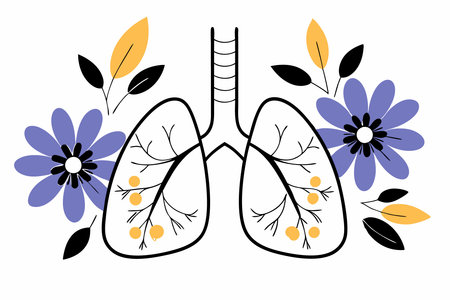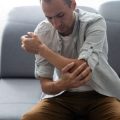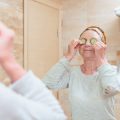Overview of Cardiac and Pulmonary Exercise Therapy in the U.S.
Cardiac and pulmonary exercise therapy have become vital parts of the American healthcare system. These rehabilitation programs are designed to help people recover from heart and lung conditions, improve their quality of life, and reduce hospital readmissions. In the United States, millions of adults live with chronic heart or lung diseases such as coronary artery disease, heart failure, COPD (chronic obstructive pulmonary disease), and asthma. For many of these patients, exercise therapy is a key component of their recovery plan.
What Are Cardiac and Pulmonary Rehabilitation Programs?
These programs usually include supervised exercise sessions, education on healthy lifestyle choices, counseling for stress management, and support for quitting smoking or other unhealthy habits. The goal is to help patients regain strength, boost confidence, and learn how to manage their health conditions more effectively.
Main Components of Rehab Programs
| Component | Description |
|---|---|
| Supervised Exercise | Personalized workouts led by trained professionals to improve cardiovascular and lung function |
| Education | Information about heart/lung health, medications, nutrition, and symptom management |
| Lifestyle Counseling | Guidance on stress reduction, quitting smoking, and adopting healthier habits |
| Support Groups | Opportunities for patients to share experiences and encourage each other |
The Role in American Healthcare
Cardiac and pulmonary rehab has been shown to lower the risk of future hospitalizations and improve survival rates. Insurance providers like Medicare often cover these services because they recognize the long-term benefits. Hospitals, outpatient clinics, and specialized rehabilitation centers across the U.S. offer these programs to eligible patients.
Key Challenges Faced by Patients and Clinicians
- Access: Not all patients can easily get to rehab centers due to distance, cost, or lack of transportation.
- Adherence: Sticking with the program can be tough for patients juggling work, family commitments, or ongoing symptoms.
- Diversity: Cultural differences and language barriers sometimes make it harder for clinicians to connect with all communities.
- Technology Gaps: While virtual rehab options are growing, not everyone has reliable internet access or devices.
- Aging Population: As America’s population gets older, there is a greater need for programs that accommodate seniors with multiple health issues.
Looking Ahead
The landscape of cardiac and pulmonary exercise therapy in the U.S. is evolving quickly as new technologies and approaches are introduced. Staying informed about these trends is crucial for both patients and healthcare providers who want the best possible outcomes.
Emerging Technologies Transforming Rehabilitation
Tele-Rehabilitation: Expanding Access Across America
Tele-rehabilitation is changing how people receive cardiac and pulmonary exercise therapy. With secure video calls, patients can work with their therapists from the comfort of home, even if they live far from a clinic. This is especially helpful in rural areas or for those who have trouble traveling. American clinics are rapidly adopting tele-rehab to keep care accessible, convenient, and safe.
Key Benefits of Tele-Rehabilitation
| Benefit | Description |
|---|---|
| Convenience | Patients can join sessions from home at flexible times. |
| Accessibility | Rural or mobility-limited patients get equal access to care. |
| Safety | Reduces risk of infection, especially important during flu season or pandemics. |
| Cost-Effective | Saves on travel and facility costs. |
Wearable Fitness Trackers: Real-Time Health Insights
Wearable devices like smartwatches and fitness bands are now common in American rehabilitation programs. These trackers monitor heart rate, oxygen levels, steps, and other vital signs. Therapists use the data to adjust exercise plans and track progress over time. Patients feel empowered as they can see their own improvements daily.
Popular Wearables Used in Cardiac & Pulmonary Rehab:
- Apple Watch (with ECG and activity tracking)
- Fitbit Charge Series (heart rate monitoring)
- Garmin Vivosmart (pulse oximeter features)
- Pulmonary-specific devices like Spire Health Tag
App-Based Monitoring: Personalized Support at Your Fingertips
App-based platforms let patients log symptoms, track medication schedules, and communicate directly with healthcare teams. Many American hospitals recommend apps designed for cardiac or pulmonary rehab, ensuring that patients stay motivated and informed between clinic visits. Push notifications remind users about exercises, while in-app educational resources help them better understand their condition.
Comparison of Technology Adoption Settings
| Technology | Clinic Setting Use | Home Setting Use |
|---|---|---|
| Tele-Rehabilitation | Video check-ins; remote assessments; group education sessions | One-on-one virtual therapy; home exercise guidance; monitoring progress remotely |
| Wearable Trackers | Data review during appointments; adjusting care plans based on recorded metrics | Continuous self-monitoring; instant feedback on physical activity and vital signs |
| App-Based Monitoring | Treatment planning; team communication with patient input from app data | Daily symptom logging; reminders; direct chat with providers when needed |
The Future Is Connected and Patient-Centered
The use of these technologies is creating a more personalized, connected, and flexible rehabilitation experience for Americans managing cardiac and pulmonary conditions. As adoption grows, patients can expect even more innovations that fit their busy lives and unique health needs.

3. Personalized and Precision-Based Approaches
As American healthcare moves toward more patient-centered care, cardiac and pulmonary exercise therapy is rapidly embracing personalized and precision-based approaches. Instead of using one-size-fits-all exercise plans, therapists now tailor programs based on each person’s unique health profile, genetics, medical history, and personal goals. This shift is making recovery safer, faster, and more effective for everyone.
How Data Shapes Individualized Therapy
Modern technology gives therapists access to a wide range of data about their patients. Wearable devices track heart rate, oxygen levels, activity patterns, and even sleep quality. Doctors can analyze genetic markers that may affect how someone responds to exercise or certain medications. By combining this information with a patient’s specific conditions—like diabetes, hypertension, or obesity—therapists can design truly customized workout routines.
Key Elements in Personalized Exercise Protocols
| Element | Description | Example in Practice |
|---|---|---|
| Genetics | Understanding DNA to predict risks and responses to exercise | Choosing exercises that minimize risk for inherited heart conditions |
| Comorbidities | Adapting plans for patients with multiple health issues | Modifying intensity for those with COPD and diabetes |
| Patient Goals | Setting targets that matter to the individual patient | Aiming to walk a grandchild to school or return to work after surgery |
| Real-time Monitoring | Using wearables to adjust sessions instantly | Changing treadmill speed if oxygen drops during rehab |
The Impact on Recovery Outcomes
This personalized approach means patients are more likely to stick with their programs because they see progress toward goals that matter most to them. They also experience fewer complications since their therapy accounts for every aspect of their health. In America’s diverse population—where genetics and lifestyle can vary widely—this kind of tailored care is already proving essential in cardiac and pulmonary rehab centers nationwide.
4. Integrating Behavioral Health and Patient Engagement
Holistic Care: Beyond Physical Exercise
In the evolving landscape of cardiac and pulmonary exercise therapy, American healthcare is embracing holistic care models that go beyond just physical training. These new approaches combine mental wellness strategies, lifestyle coaching, and motivational interviewing to address the whole person—mind and body. This integration is crucial because research shows that emotional well-being, motivation, and personal habits play a major role in successful long-term recovery.
Why Mental Wellness Matters in Rehab
Many patients face anxiety, depression, or low motivation after heart or lung issues. If these mental health concerns are not addressed, it can be tough for them to stick with their rehab program. That’s why more clinics now include counseling services, support groups, and stress management techniques as part of their therapy. This approach helps patients feel supported and less overwhelmed during their journey to better health.
Lifestyle Coaching & Motivational Interviewing
Lifestyle coaching focuses on helping patients set realistic goals for exercise, diet, sleep, and stress reduction. Motivational interviewing is a conversation style where therapists guide patients to find their own reasons for making healthy choices. Together, these methods boost confidence and help people overcome barriers like fear or lack of time.
Key Elements of Holistic Cardiac & Pulmonary Rehab
| Element | Description | Benefits |
|---|---|---|
| Mental Wellness Support | Counseling, mindfulness exercises, support groups | Reduces anxiety/depression; improves outlook |
| Lifestyle Coaching | Personalized guidance on nutrition, activity, sleep | Encourages healthy habits; supports sustainable change |
| Motivational Interviewing | Patient-centered conversations about health goals | Boosts motivation; empowers self-management |
| Diverse Patient Engagement Strategies | Culturally sensitive programs, language options, family involvement | Improves adherence in different communities; reduces health disparities |
Diversity in Patient Engagement Across America
The U.S. population is incredibly diverse. To reach everyone effectively, rehab programs are adapting by offering materials in multiple languages, respecting cultural food preferences, and involving families in care planning. Telehealth options also make it easier for people in rural or underserved areas to participate in behavioral health sessions from home.
Example: A Day in Holistic Cardiac Rehab
- A morning group mindfulness session led by a behavioral therapist.
- A one-on-one meeting with a lifestyle coach to set weekly activity goals.
- An exercise class tailored to individual fitness levels.
- A virtual check-in for family members who want to support loved ones.
- A wrap-up using motivational interviewing to celebrate progress and plan next steps.
This patient-centered model is transforming how Americans experience cardiac and pulmonary rehabilitation—making it more supportive, effective, and accessible for all walks of life.
5. Policy, Accessibility, and Future Outlook
Healthcare Policy Trends Shaping Cardiac and Pulmonary Exercise Therapy
In the United States, healthcare policy is always changing, and these changes directly impact cardiac and pulmonary exercise therapy. Recent trends focus on value-based care, which means healthcare providers are encouraged to deliver better results for patients rather than just more services. This shift pushes hospitals and clinics to adopt new technologies, like remote patient monitoring or telehealth exercise sessions, especially for those with heart and lung conditions.
Insurance Coverage Updates
| Type of Coverage | Current Status | Future Possibilities |
|---|---|---|
| Medicare/Medicaid | Covers cardiac rehab; limited pulmonary rehab; telehealth expanding | Broader coverage for home-based and virtual programs expected |
| Private Insurance | Varies by provider; some offer comprehensive rehab benefits | Likely to follow Medicare’s lead as digital health proves effective |
| Self-Pay/Uninsured | High out-of-pocket costs limit access | Potential for lower-cost digital solutions and community programs |
Challenges in Rural and Underserved Communities
Access to quality cardiac and pulmonary exercise therapy isn’t equal across America. In rural areas, people often have to travel long distances to reach specialized care centers. Some communities lack trained rehab professionals or up-to-date equipment. Telehealth has started to close this gap by offering virtual exercise guidance, but barriers like internet access and digital literacy still exist.
Key Issues Facing Rural and Underserved Populations:
- Lack of local facilities providing structured rehab programs
- Limited transportation options for regular visits
- Lower rates of insurance coverage or awareness of available services
- Cultural differences impacting participation in rehab activities
The Future of Cardiac and Pulmonary Exercise Therapy in America
The future looks promising as technology becomes more integrated into healthcare. We can expect greater use of wearable devices that track physical activity, heart rate, oxygen levels, and even send real-time data to healthcare teams. AI-driven apps may soon create personalized exercise plans based on a person’s unique health profile. Policymakers are likely to push for more inclusive insurance coverage, making these therapies accessible to all Americans—no matter where they live.


